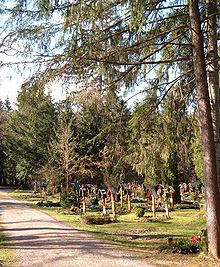
The Bavarian Forest National Park is a national park in the Eastern Bavarian Forest immediately on Germany's border with the Czech Republic. It was founded on 7 October 1970 as the first national park in Germany. Since its expansion on 1 August 1997 it has covered an area of 24,250 hectares. Together with the neighbouring Czech Bohemian Forest the Bavarian Forest forms the largest contiguous area of forest in Central Europe.

Johannes Stark was a German physicist who was awarded the Nobel Prize in Physics in 1919 "for his discovery of the Doppler effect in canal rays and the splitting of spectral lines in electric fields". This phenomenon is known as the Stark effect.
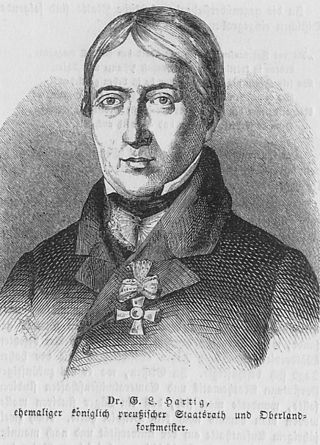
Georg Ludwig Hartig was a German forester.

Borgholzhausen is a town in the district of Gütersloh in the state of North Rhine-Westphalia, Germany. It is located in the Teutoburg Forest, approx. 20 km north-west of Bielefeld.

The clearing of woods and forests is the process by which vegetation, such as trees and bushes, together with their roots are permanently removed. The main aim of this process is to clear areas of forest, woodland or scrub in order to use the soil for another purpose, such as pasture land, arable farming, human settlement or the construction of roads or railways.

The Free Workers' Union of Germany was an anarcho-syndicalist trade union in Germany. It stemmed from the Free Association of German Trade Unions (FDVG) which combined with the Ruhr region's Freie Arbeiter Union on September 15, 1919.

Ingo Zechner is a philosopher and historian. He is the Director of the Ludwig Boltzmann Institute for Digital History (LBIDH) in Vienna.
Ewiger Wald is a 1936 German film directed by Hanns Springer and Rolf von Sonjevski-Jamrowski. The film's international English title was Enchanted Forest.
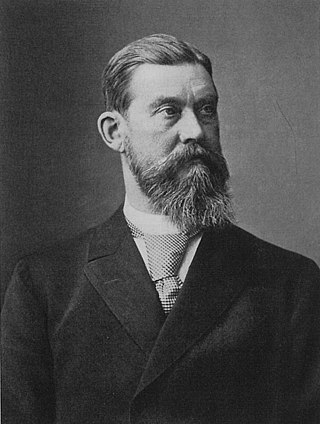
Bernhard Engelbert Joseph Danckelmann was a German forester and forest scientist.

The Südkurier is a regional daily newspaper in Germany serving the regions northwest of Lake Constance, Hochrhein, and Black Forest with its headquarters Konstanz, Germany. The paper appears with a circulation of around 130,000, six times per week in Berliner format. The predecessor of the Südkurier was the Konstanzer Zeitung.

Walter von Keudell was a German forest expert and politician. He served as interior minister of Germany between 1927 and 1928 during the period of the Weimar Republic.
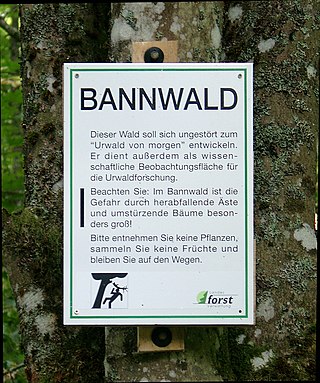
Bannwald is a German word used in parts of Germany and Austria to designate an area of protected forest. Its precise meaning has varied by location and over time.
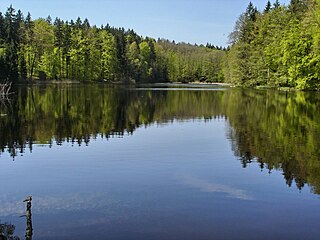
The Altdorf Forest is a forested, low mountain ridge between Aulendorf and Vogt in the county of Ravensburg in the German state of Baden-Württemberg. It is up to 776.6 m above sea level (NHN) high.

Hauberg is a type of communal forest management that is typical of the Siegerland and adjacent parts of the Lahn-Dill Uplands and the Westerwald in central Germany. Its aim is to manage the forest in order to produce tanbark and charcoal for the regionally important iron ore industry as well as firewood. In addition to forestry uses, the area also has agricultural uses, such as the growing of rye and buckwheat, typical of shifting cultivation, in the year after the timber harvest, as well as subsequent communal grazing (commons).
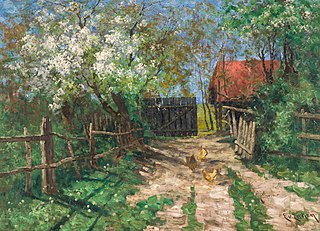
Elisabeth von Eicken was a German landscape painter.

For the composer, see Christian Hartmann (composer).

Heinrich Scheel was a German left-wing historian and longtime vice president of the East German Academy of Sciences and professor of modern history at Humboldt University of Berlin. Scheel was notable for putting forward a theory of the German radical at the time of the French revolution, in an attempt to determine an alternative tradition in Germany. Scheel was most notable for being a German resistance fighter against the Nazi regime, during World War II. He was a member of a Berlin-based anti-fascist resistance group that was later called the Red Orchestra by the Abwehr, during the Nazi regime.
Walther Schoenichen was a German biologist and a prominent proponent of nature conservation within Nazi Germany.
Herbert Arthur Strauss was a German-born American historian.
Nikolaus Creutzburg was a German geographer.


